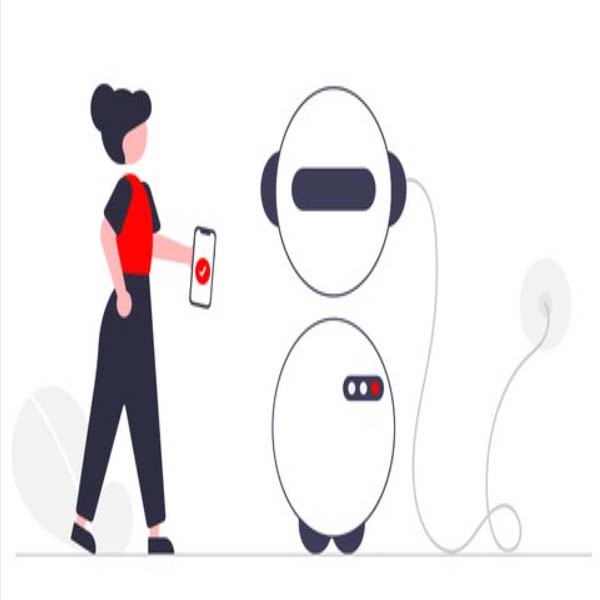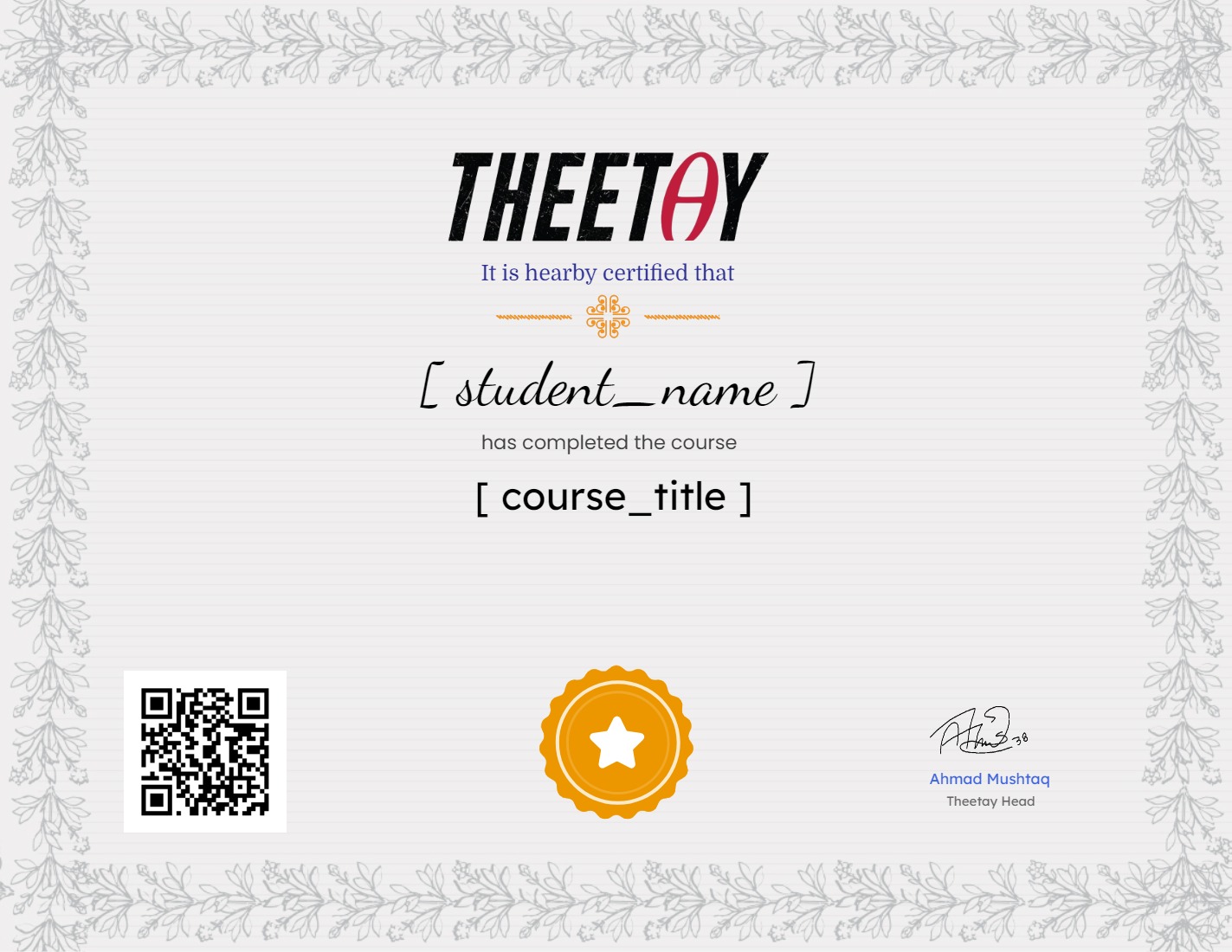Practical AI with Python and Reinforcement Learning

About Course
Learn how to build and create intelligent agents with Practical AI with Python and Reinforcement Learning, a free online course available on Theetay. This course, offered by Udemy, teaches you how to use Python to harness the power of Neural Networks and Reinforcement Learning.
This course focuses on a practical approach that puts you in the driver’s seat to build and create intelligent agents, instead of just showing you small toy examples. Here we focus on giving you the power to apply artificial intelligence to your own problems, environments, and situations.
This course covers the following topics:
- Artificial Neural Networks
- Convolution Neural Networks
- Classical Q-Learning
- Deep Q-Learning
- SARSA
- Cross Entropy Methods
- Double DQN
- and much more!
This course is designed to help you create your own deep reinforcement learning agents on your own environments. It focuses on a practical approach with the right balance of theory and intuition with useable code. The course uses clear examples in slides to connect mathematical equations to practical code implementation, before showing how to manually implement the equations that conduct reinforcement learning.
You’ll learn how Deep Learning with Keras and TensorFlow works, before diving into Reinforcement Learning concepts, such as Q-Learning. Then we can combine these ideas to walk you through Deep Reinforcement Learning agents, such as Deep Q-Networks!
Enroll in this free course today and start building your own intelligent agents!
What Will You Learn?
- Reinforcement Learning with Python
- Creating Artificial Neural Networks with TensorFlow
- Using TensorFlow to create Convolution Neural Networks for Images
- Using OpenAI to work with built-in game environments
- Using OpenAI to create your own environments for any problem
- Create Artificially Intelligent Agents
- Tabular Q-Learning
- State–action–reward–state–action (SARSA)
- Deep Q-Learning (DQN)
- DQN using Convolutional Neural Networks
- Cross Entropy Method for Reinforcement Learning
- Double DQN
- Dueling DQN
Course Content
Course Overview
-
A Message from the Professor
-
– Course Curriculum Overview
09:34 -
– Course Success and Overview
06:44 -
Course Material Download Link
00:00
Course SetUp and Installation Procedures
-
– Anaconda and Jupyter Notebook Install and Setup
13:49 -
– Environment Setup Walkthrough
10:09
Numpy Basics Overview
-
– Introduction to Numpy Section
02:14 -
– NumPy Arrays
22:41 -
– Numpy Operations Part One
11:06 -
– Numpy Operations Part Two
08:14 -
– Numpy Exercise Overview
01:18 -
– Numpy Exercise Solutions
07:05
Matplotlib and Visualization Overview
-
– Introduction to Matplotlib
04:06 -
– Matplotlib Basics
12:35 -
– Matplotlib Understanding the Figure Object
07:32 -
– Matplotlib Implementing Figures and Axes
14:31 -
– Matplotlib Figure Parameters
04:56 -
– Matplotlib Subplots Functionality
19:17 -
– Matplotlib Styling Legends
07:02 -
– Matplotlib Styling Colors and Styles
14:29 -
– Advanced Matplotlib Commands Optional
03:52 -
– Matplotlib Exercise Questions Overview
06:10 -
– Matplotlib Exercise Questions Solutions
16:39
Machine Learning Deep Learning and Reinforcement Learning
-
– What is Machine Learning Deep Learning and Artificial Intelligence
11:08 -
– Supervised Machine Learning Process
13:41
Pandas and ScikitLearn Crash Course
-
– Pandas Series Part One
09:28 -
– Pandas Series Part Two
10:41 -
– Pandas DataFrames Part One
19:27 -
– Pandas DataFrames Part Two
08:18 -
– Pandas DataFrames Part Three
13:57 -
– Pandas DataFrames Part Four
14:30 -
– ScikitLearn Using TrainTestSplit
11:20 -
– ScikitLearn Using Metrics
14:48
Artificial Neural Network and TensorFlow Basics
-
– Introduction to Artificial Neural Networks
02:15 -
– Perceptron Model
10:39 -
– Neural Networks
07:19 -
– Activation Functions
10:39 -
– MultiClass Classification Considerations
10:34 -
– Cost Functions and Gradient Descent
18:13 -
– Backpropagation
14:47 -
– TensorFlow vs Keras Explained
02:13 -
– Keras Syntax Preparing the Data
10:49 -
– Keras Syntax Creating and Training the Model
13:59 -
– Keras Syntax Model Evaluation
12:56 -
– Keras Regression Exploratory Data Analysis
18:51 -
– Keras Regression EDA Continued
13:16 -
– Keras Regression Data Preprocessing and Model Creation
08:43 -
– Keras Regression Model Evaluation and Predictions
11:23 -
– Keras Classification EDA and Preprocessing
08:05 -
– Keras Classification Overfitting and Evaluation
16:50 -
– Keras Classification Overview of Project Options
01:40 -
– Keras Project Notebook Exercise Overview
07:41 -
– Keras Project Solution Exploratoy Data Analysis
20:35 -
– Keras Project Solutions Missing Data Part One
14:46 -
– Keras Project Solutions Dealing with Missing Data Part Two
12:02 -
– Keras Project Solutions Categorical Data
17:23 -
– Keras Project Solutions Data Preprocessing
03:45 -
– Keras Project Solutions Creating and Training the Model
03:57 -
– Keras Project Solutions Model Evaluation
09:42 -
– Tensorboard
18:22
Convolutional Neural Networks with TensorFlow
-
– Convolutional Neural Networks Section Overview
01:33 -
– Image Filters and Kernels
11:35 -
– Convolutional Layers
14:01 -
– Pooling Layers
06:47 -
– MNIST Data Set Overview
04:41 -
– CNN on MNIST The Data
12:57 -
– CNN on MNIST Creating and Training the Model
16:14 -
– CNN on MNIST Model Evaluation
06:53 -
– CNN on CIFAR10 The Data
11:24 -
– CNN on CIFAR10 Evaluating the Model
07:05 -
– Downloading Data Set for Real Image Lectures
05:22 -
– CNN on Real Image Files Reading in the Data
14:54 -
– CNN on Real Image Files Data Generation
15:37 -
– CNN on Real Image Files Creating the Model
13:37 -
– CNN on Real Image Files Model Evaluation
08:49 -
– CNN Exercise Project Overview
02:10 -
– CNN Exercise Project Solutions
08:31
Reinforcement Learning Core Concepts
-
– Overview of Core Concepts for Reinforcement Learning Section
01:37 -
– Agents Environments and Policy
11:43 -
– Rewards Discount Factors and Bellman Equation
13:35 -
– Deterministic vs Stochastic Processes
05:17
Open AI Gym Overview
-
– Introduction to OpenAI Gym Section
01:05 -
– OpenAI Overview and History
11:40 -
– OpenAI Gym Documentation Tour
12:38 -
– OpenAI Gym Environment Key Ideas
07:52 -
– OpenAI Gym Working with the Environment
27:23 -
– OpenAI Gym Agent Interacting with the Environment
20:30
Classical Q Learning
-
– Introduction to Classical QLearning Overview
04:12 -
– History of QLearning
03:53 -
– QLearning Theory Part One Table Intuition
15:38 -
– QLearning Theory Part Two Q Target Equation
12:08 -
– QLearning Theory Part Three QUpdate Equation
08:28 -
– QLearning Theory Part Four Programmatic Q Updates
10:56 -
– QLearning Implementation Part One Environment Setup
14:15 -
– QLearning Implementation Part Two Table and Hyperparameters
10:34 -
– QLearning Implementation Part Three Update Functions
17:10 -
– QLearning Implementation Part Four Agent Training
17:03 -
– QLearning Implementation Part Five Visualization and Utilization
09:50 -
– Continuous QLearning Theory Part One Environment Setup
12:33 -
– Continuous QLearning Theory Part Two QTable Shape
16:33 -
– Continuous QLearning Part Four Discretization Implementation
17:38 -
– Continuous QLearning Part Five Functions and Hyperparameters
10:08 -
– Continuous QLearning Part Six Training and Usage
19:36 -
– QLearning Exercise Project
07:06 -
– QLearning Exercise Project Solutions
20:52
Deep QLearning
-
– DQN Section Overview
01:57 -
– History of DQN
04:45 -
– DQN Theory and Intuition Part One Review of Core RL Ideas
04:48 -
– DQN Theory and Intuition Part Two Neural Networks for RL
10:50 -
– DQN Theory and Intuition Part Three Feedback and Function Approximation
21:10 -
– DQN Theory and Intuition Part Four Experience Replay
18:46 -
– DQN Theory and Intuition Part Five Mapping Key Ideas to Code
16:04 -
– DQN Manual Implementation Part One Imports and Environment
04:45 -
– DQN Manual Implementation Part Two Artificial Neural Network
07:16 -
– DQN Manual Implementation Part Three Hyperparameters and Functions
18:43 -
– DQN Manual Implementation Part Four Model Training
15:51 -
– DQN KerasRL2 Part One Overview
07:20 -
– DQN KerasRL2 Part Two Imports and Environment
03:26 -
– DQN KerasRL2 Part Three Creating the ANN
05:40 -
– DQN KerasRL2 Part Four DQN Agent
13:43 -
– DQN Exercise Overview
03:28 -
– DQN Exercise Solutions
10:07
Deep QLearning on Images
-
– Introduction to Deep QLearning on Images
04:44 -
– Key Image Concepts Review
07:00 -
– Image History in Replay Buffer Concept Review
06:26 -
– Processing Images Part Three Coding Replay Buffer and Sequences
14:22 -
– Processing Images Part Four Coding Preprocessing
12:08 -
– DQN on Images Part One Imports and Processing
18:31 -
– DQN on Images Part Two Constructing the Network
12:00 -
– DQN on Images Part Three Setting up the Agent
19:25 -
– DQN Exercises Overview
06:05 -
– DQN Exercises Solution
20:05
Creating Custom OpenAI Gym Environments
-
– Introduction to Custom OpenAI Gym Environments
02:53 -
– Custom Gym Environments Class Structure Overview
08:35 -
– Creating Custom Game Part One Snake Game Overview
04:08 -
– Creating Custom Game Part two Class Structure and Setup
07:25 -
– Creating Custom Game Part Three Game Reset
06:58 -
– Creating Custom Game Part Four Direction and Movement
07:55 -
– Creating Custom Game Part Five Eating and Spawning Food
03:57 -
– Creating Custom Game Part Six Human Input
07:12 -
– Creating Custom Game Part Seven Displaying Score
04:32 -
– Creating Custom Game Part Eight Game Over Conditions
03:38 -
– Creating Custom Game Part Nine Ending the Game
03:18 -
– Creating Custom Game Part Ten Play Logic
16:35 -
– OpenAI Gym Environment Directory Structure Overview
05:57 -
– Gym Directory and Setup File
07:06 -
– Filling in the initpy Files
04:27 -
– Conversion of Game to OpenAI Gym Environment Class
25:15 -
– Conversion of Game to OpenAI Gym Environment Part Two
14:34 -
– Registration of the Environment
09:24 -
– Training an Agent on the Custom Environment
07:51 -
– Training an Agent on the Custom Environment
07:51
Earn a certificate
Add this certificate to your resume to demonstrate your skills & increase your chances of getting noticed.

Student Ratings & Reviews


